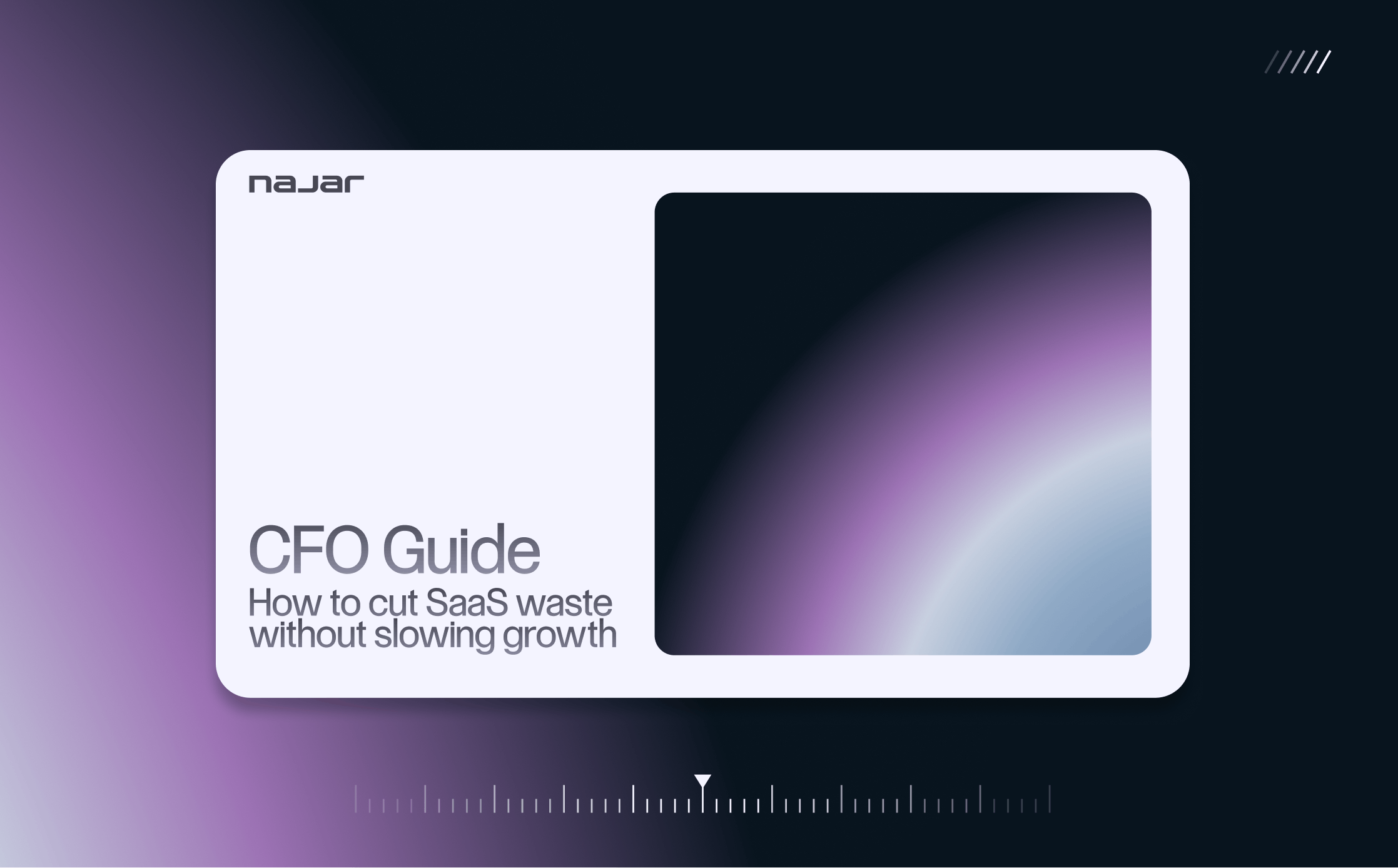How can you effectively benchmark your SaaS solutions?
Choosing SaaS software is an important decision for any fast-growing company. With no fewer than 17,000 SaaS solution providers in the U.S. and around 1,000 in France, it's pretty normal to feel overwhelmed by what's on offer.
That's why it's crucial to carry out a SaaS comparative analysis, also known as SaaS benchmarking, to choose the SaaS tool best suited to your needs. But how do you go about it? Here's our practical advice!
What is a SaaS benchmark, and why do it?
Are you looking for the right SaaS software? It's not easy to choose, given the proliferation of SaaS products available in a growing market.
SaaS benchmarking is the common practice of conducting a study to compare the performance of different software and online services.
This type of benchmarking enables you to select the best option for your specific needs and sector of activity.
- Do you manage large quantities of data? You need SaaS software with high data storage and processing capacities.
- Do you focus on online marketing? You need a SaaS with marketing automation capabilities.
- Are you looking to streamline collaboration between your teams? Then you need SaaS software for online communication.
Performing a SaaS benchmark is a real asset for companies looking to make an informed choice by comparing market offerings.
An objective comparison of the various options available on the market
A SaaS benchmark enables you to identify the solutions that best meet your needs in terms of functionality, price, ease of implementation, performance, compatibility, scalability and more.
Beyond the information provided by the designer, don't hesitate to read user reviews and consult the performance tests available.
With market trends in mind, you'll also find it easier to negotiate prices with SaaS providers.
Save time and money
By choosing the SaaS software best suited to your needs from the outset, you avoid going through the tedious process of testing and adopting multiple products.
In addition to saving you money up front, you also limit the costs associated with employee training, integration, data migration…
Stay competitive
The functionalities of SaaS solutions evolve with business demands. Benchmarking helps you stay competitive by keeping an eye on market trends and new technologies in your field.
By comparing the performance of different software products, you can identify new features offered by software vendors, or trends emerging in the industry.
Benchmarking is also a technique that allows you to monitor the competition and see what tools are being used by competing companies.
Where can I find SaaS benchmarking data?
Deciding on the best online software for your business is no easy task. That's where benchmarking data can help you make an informed decision and streamline your SaaS purchasing process.
You can find this data from a variety of sources, accessible to all, each offering a unique perspective on software performance.
Software comparison sites
These sites allow users to research and compare the features, pricing and reviews of different SaaS products.
Note that these are good sources when the reviews are written by real users (beware of generated reviews). You should also make sure that the site promoting the software does not receive any affiliate income. This could inevitably skew the review!
Among these sources, Capterra, G2 Crowd and Software Advice are excellent software comparison sites.
Market research
Market studies are an important source of data for companies seeking to compare the performance of the various SaaS products available.
These reports are generally produced by industry analysts or research firms, who collect data from the various market players. The information gathered is detailed and covers a wide range of topics:
- Market trends (which SaaS types are most widely used?)
- Market share and growth forecasts (who are the main suppliers?)
- Strengths and weaknesses of different software suppliers
- Product evaluations
- Performance of market players.
Gartner and its annual report on enterprise software is an example of a valuable source of data for IT professionals.
Surveys and polls
Surveys and polls, sometimes included in the sources mentioned above, are a quick way to obtain valuable information on end-user usage and satisfaction with various software products.
This type of information gives you an in-depth understanding of a specific product's strengths and weaknesses, as well as areas where it can be improved.
So, while users may point out certain shortcomings, if these relate to features you don't need, you could still adopt the tool.
Surveys and polls can be conducted by research companies or directly by the software publishers themselves. G2 Crowd's customer satisfaction reports, for example, offer an unbiased assessment of different products based on user comments and opinions.
Surveys and polls have the advantage of being based on reliable data and real customer testimonials. With a high sampling rate, they are a reliable source of information.
Designers themselves can also consult them to understand their customers' expectations and adapt their offers accordingly.
Interpreting the data collected during a SaaS benchmark: the 3 essential points
You've started your SaaS benchmark and found plenty of information. Now you need to sort and interpret this data in order to define your action plan.
To gain a full understanding of the results and draw up an accurate picture of the current market, you need to take a number of factors into account. We've identified 3 key points for you.
1 - Understanding comparison criteria
To correctly interpret your benchmarking data, it's crucial to understand the parameters taken into account during reviews and comparisons.
The criteria used vary according to the type of software or service you are comparing. They may include:
- performance criteria such as speed, capacity, reliability or data security ;
- functional criteria, such as the availability of certain functions or compatibility with other systems and tools;
- total cost of ownership criteria, which include the direct and indirect costs associated with using SaaS, such as subscription fees, training and technical support costs, etc.
2 - Consider the context of use
The performance of a SaaS for your business will vary according to various factors, such as company size, objectives, end-user requirements, specific functionalities needed, and so on.
For example, a SaaS that is well suited to a small company may not be as effective for a large enterprise requiring hundreds of user accounts.
Similarly, a company working in the healthcare sector will have higher compliance and data security requirements than one operating in the retail sector.
Performance also varies according to the working environment: the IT systems in place, the teams responsible for installing and maintaining the software...
Taking these factors into account is therefore essential for accurate interpretation of benchmarking results, and for in-depth knowledge of SaaS performance in the field you're interested in.
3 - Use recent data
The more recent your benchmark data, the more in line your analysis will be with the current state of the market. Benchmark data can quickly become obsolete, as the SaaS market is constantly evolving.
New products are regularly launched, existing suppliers' offerings evolve, end-user needs change, etc. We therefore advise you to consult regularly updated sources of information, such as :
- publications in specialized journals
- research reports
- recent surveys
Keep abreast of market trends by monitoring technological innovations, mergers and acquisitions, new entrants, etc.
Choosing the right SaaS software for your needs can be difficult, given the multitude of offerings on the market. SaaS benchmarking is a common practice that enables you to compare the performance of different software and online services, to select the best option.
This comparative analysis is an asset for companies seeking to make a conscientious choice, for reasons of cost, efficiency and competitiveness.
Focus on the essentials by delegating your SaaS management to Najar and its SaaS Procurement solution. An online software purchasing and management solution, we offer you an all-in-one platform with an easy-to-use interface and a host of features. Take back control of your SaaS usage with our online calculator.




